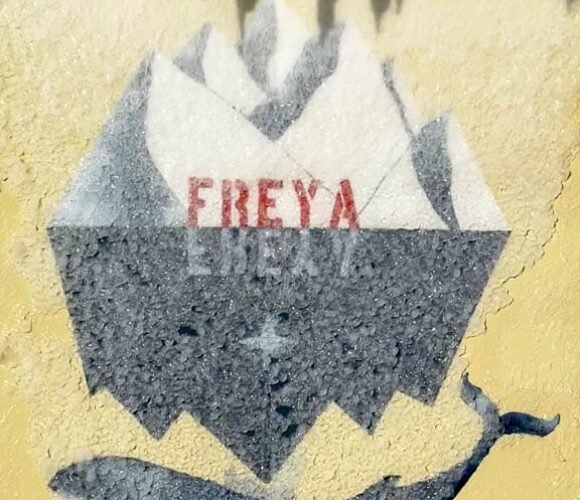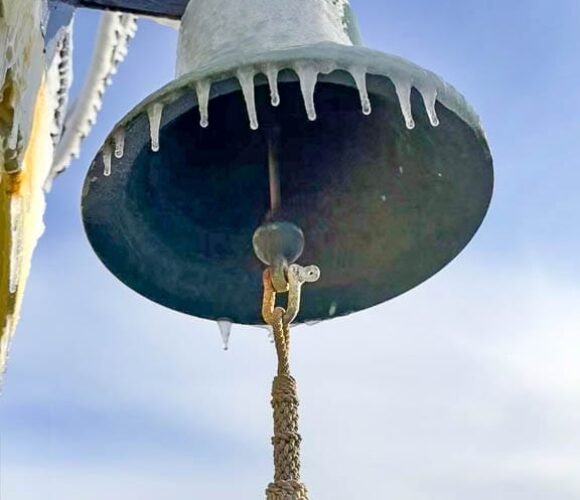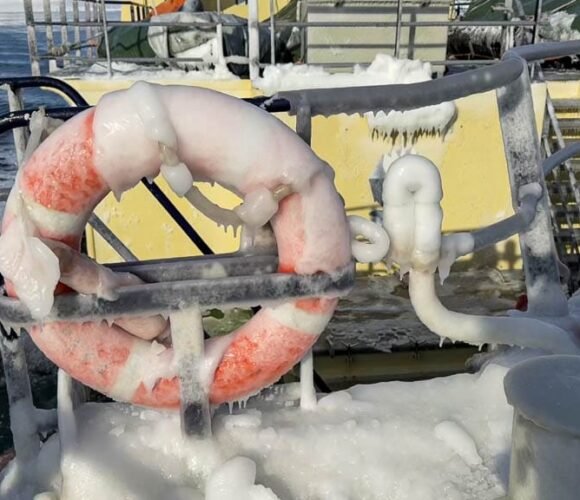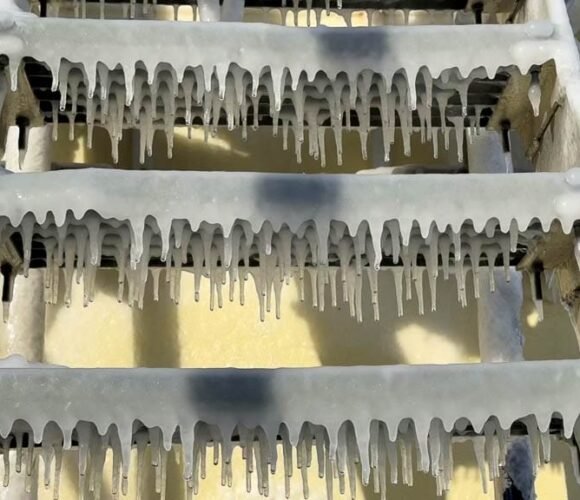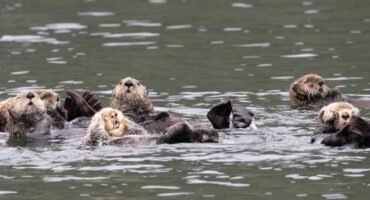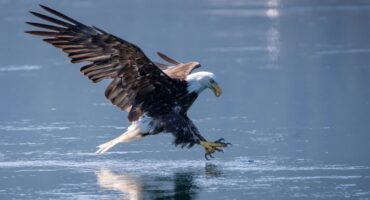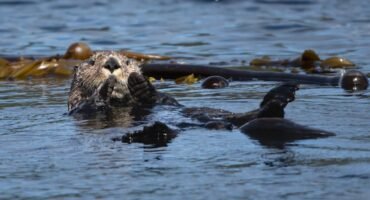
Svalbard Photography Expedition on the M/V Freya
- Svalbard Photography Expedition
- How to Get to Svalbard (and what to do once you are there)
- Svalbard Photography Tour
- A Snowmobile Trip to East Svalbard
- Svalbard Photography Expedition on the M/V Freya
- Landscapes of Svalbard
- Harp Seals in the Sea Mist
- Falling in Love with the Arctic Walrus
- The Bearded Seal - A New Favourite
- Minke Whale Surprise
- Polar Bears (a.k.a. pixel bears)
- The Birds of Svalbard
- Reflections on Our Trip to Svalbard (and Svalbard Departure Tips)
This wasn’t just any Arctic cruise — we were part of an 8 night Svalbard photography expedition led by Joshua Holko, an award-winning wildlife photographer and polar specialist. The trip was designed specifically for photographers, with a small group, purpose-selected ship, and a flexible itinerary that allowed us to chase light and wildlife rather than follow a set schedule.
We kept reading that late winter is the best time of year for light in Svalbard, and therefore a perfect time for a Svalbard photography expedition. it wasn’t until we arrived that we truly understood what that meant. Svalbard experiences polar night — complete darkness — from late October to mid-February, and midnight sun — 24-hour daylight — from mid-April to late August. In between, in early spring, the sun doesn’t rise and set like it does further south — instead, it circles low around the horizon all day and night. It never climbs high overhead, which means you get long, golden light and soft shadows almost the entire time. It’s basically photographer heaven… except when you’re trying to keep your own shadow out of the shot!
Our Ship – MV Freya
Our home for the Svalbard photography expedition was the M/V Freya, a Swedish ship about 43 meters long and designed to accommodate up to 24 passengers. For our charter, we only had 12 guests, which meant tons of space to spread out and focus on photography without feeling crowded.
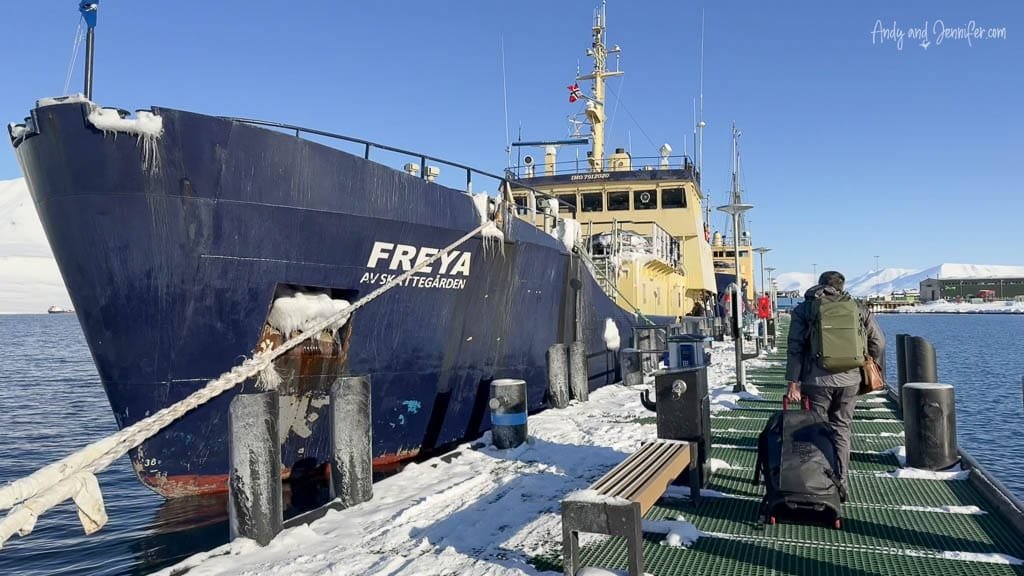
The Freya is perfect for a Svalbard photography expedition:
- The deck is low to the water, offering fantastic shooting angles.
- You can walk completely around the ship for 360° views.
- There’s an elevated bow deck for a different perspective.
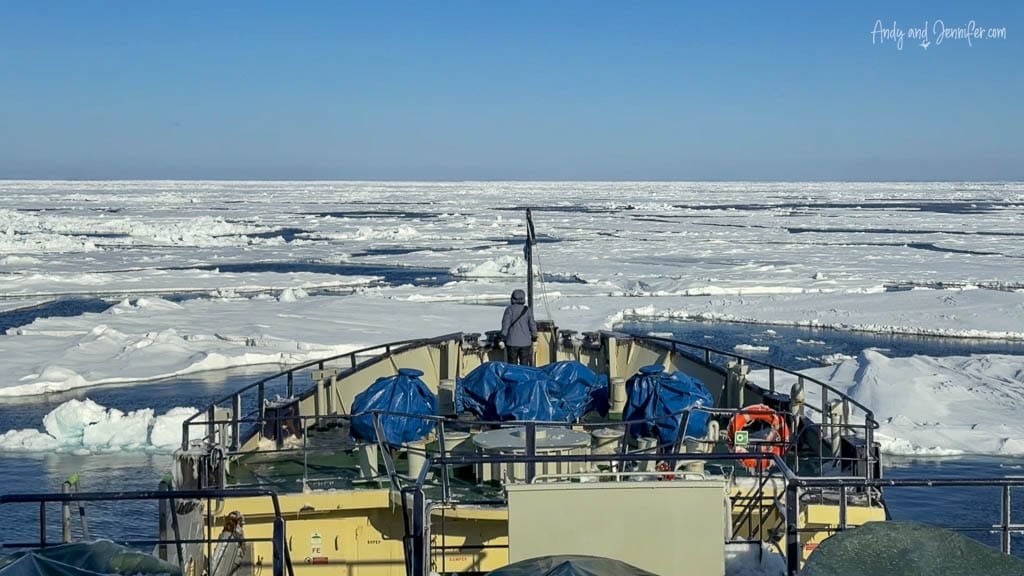
- You can even lay flat and shoot through the scuppers (small drainage openings along the deck) — ideal for low, dramatic wildlife shots.
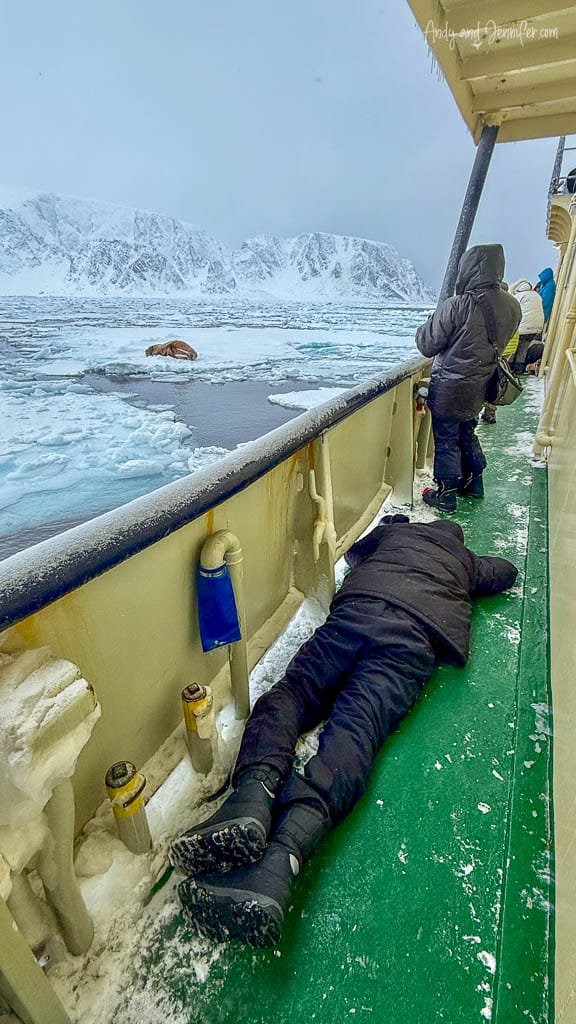
The lounge and dining area had smaller windows, but the bridge — which was open to guests 24/7 — offered panoramic views and was the best place to spot wildlife. The ship also had a jacuzzi and sauna, though we didn’t get around to using either.
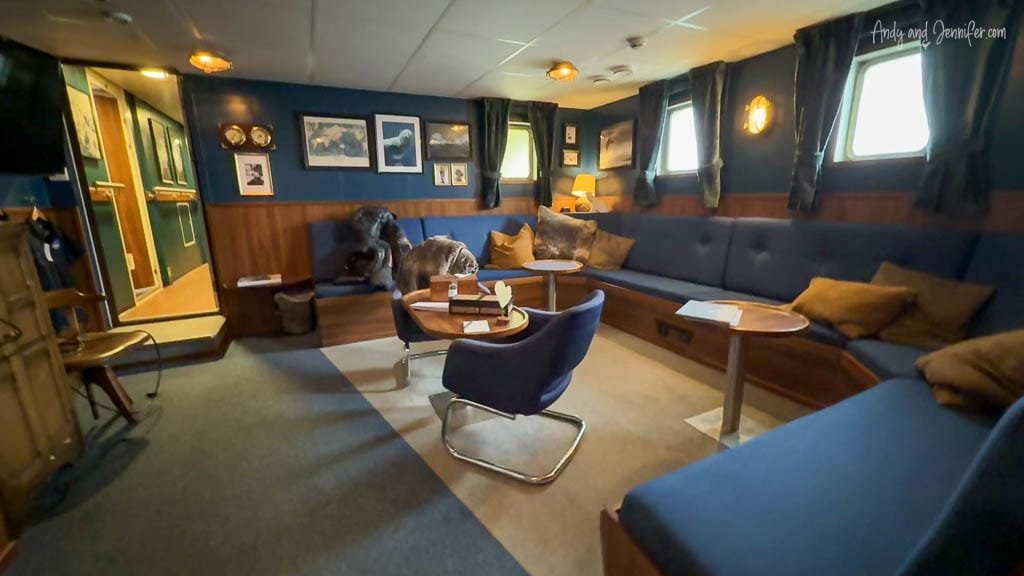
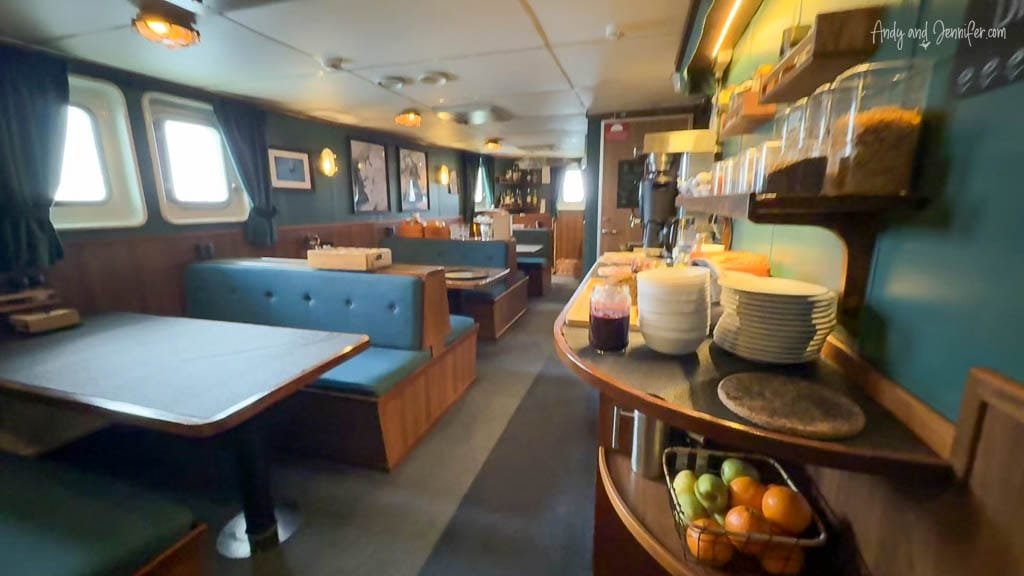
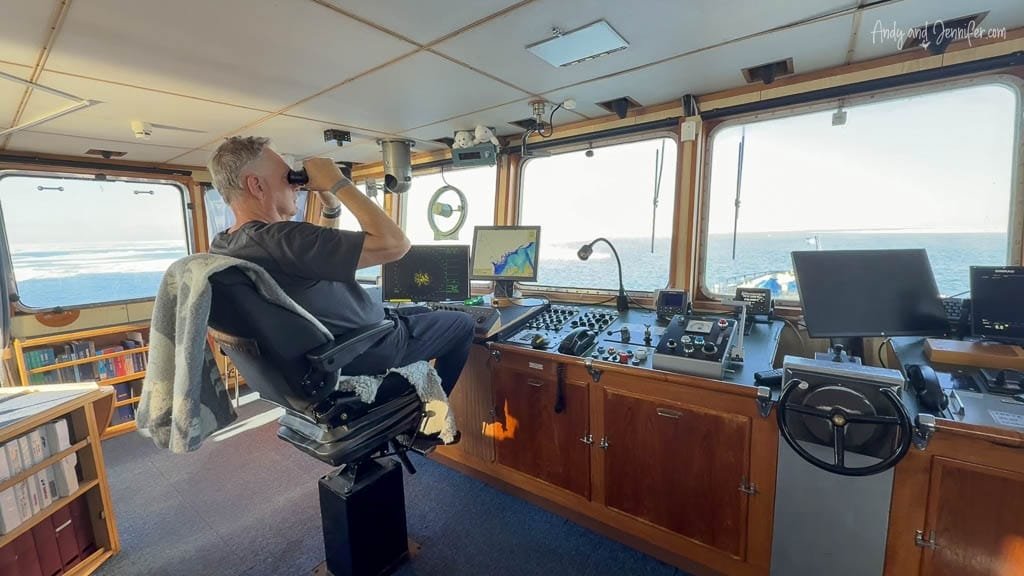
The ship carries two zodiacs, but at this time of year, cruising around in one would’ve been brutally cold. Still, for the right photo opportunity, the crew had full-body exposure suits ready for anyone willing to brave it.
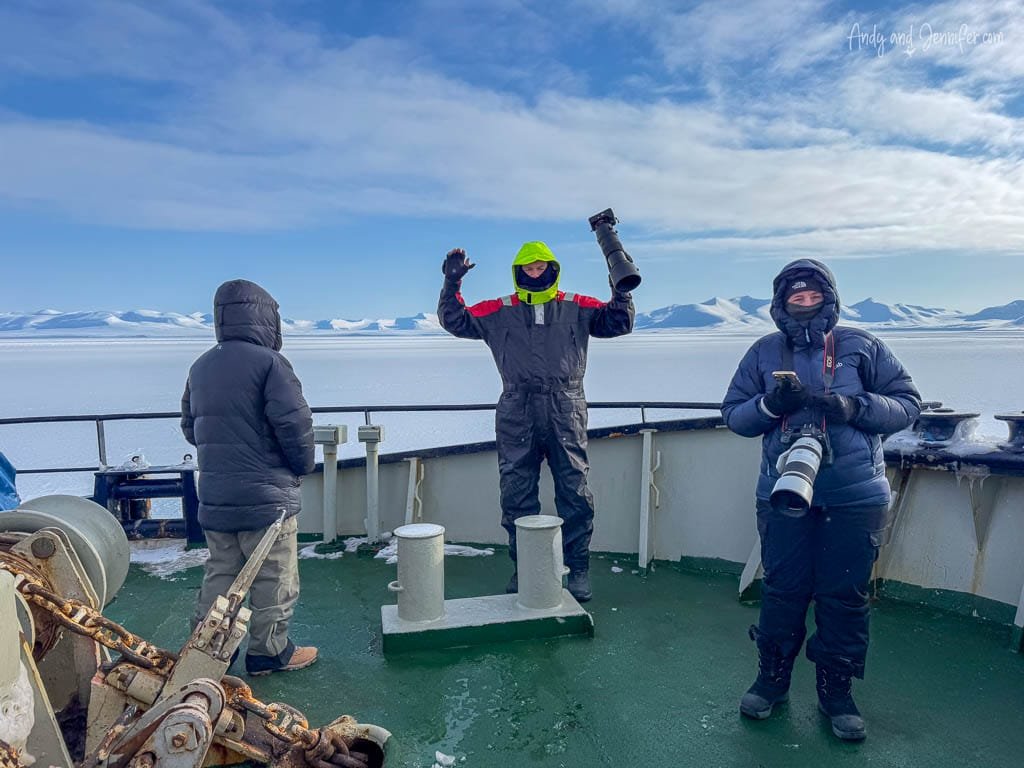
The exposure suites were different from the survival suits we saw during the safety briefing on the first night. I’d been wracking my brain trying to figure out how I was supposed to operate a camera with those lobster-claw mitts, and wondering how on earth I’d get my boots over the built-in booties. Turns out, the exposure suits were much more practical — and way less intimidating. Andy found the exposure suit comfortable and warm and wore it even though we never ended up leaving the ship. Mine was several sizes too big (but would have worked fine if needed).
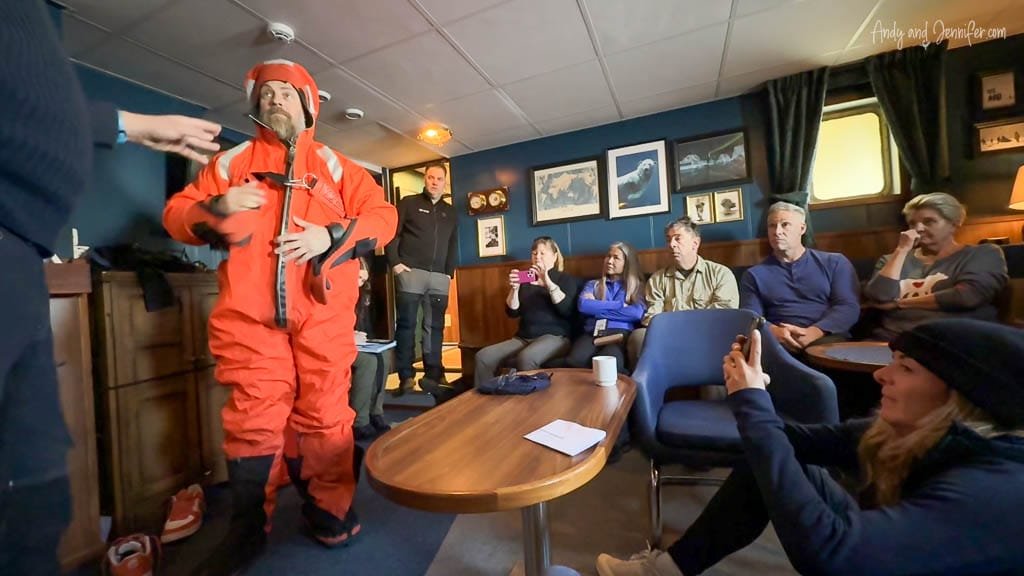
Life Onboard the M/V Freya
Life on the M/V Freya was all about staying flexible — and staying ready. “You can sleep when you get home,” was the message at the first briefing.
The daily rhythm revolved around wildlife sightings. There was no fixed itinerary, giving our expedition leaders the freedom to follow weather, ice conditions, and wildlife wherever they led. The crew kept constant watch from the bridge. When something appeared — a bear, a fox, or even a spectacular iceberg — they’d let everyone know. Within minutes we were bundled up and on deck with our cameras.
Meals and Comforts
-
Breakfast and lunch were served buffet-style; dinner was a two-course seated meal.
-
In between, we had Fika — Swedish-style morning and afternoon tea, with fruit and something sweet to keep energy levels up.
- The ship offered internet access for £100 for the week. We opted to unplug and spend free time editing photos or napping between sightings.
-
Our cabin was cozy but smartly designed. It had two single beds with deep drawers underneath, a desk between, a closet, and a small but functional bathroom. The heated floor was a nice touch and perfect for drying gear. About six days in, we discovered a pull-down blackout shade hidden behind our curtains. Shampoo, conditioner, body wash, and lotion were provided — and you could borrow a hairdryer if needed.
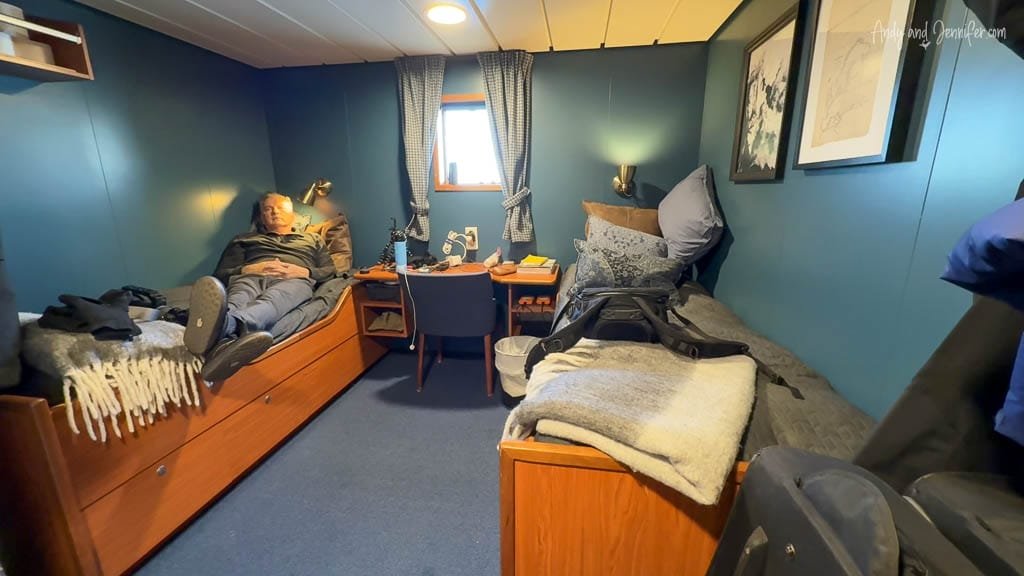
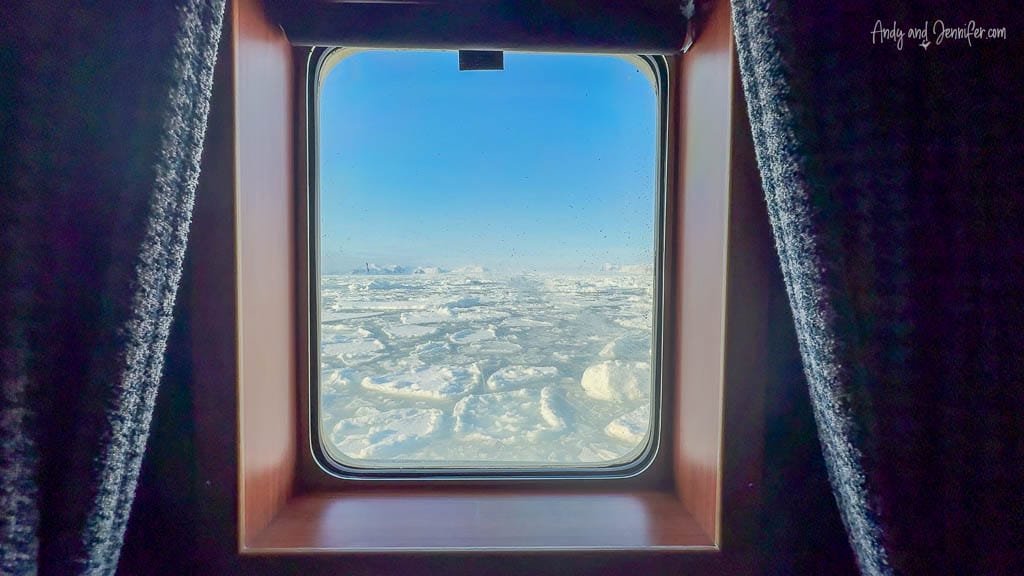
Daily Routine During Our Svalbard Photography Expedition
There was no fixed itinerary, which we absolutely loved — it meant the expedition leaders could adapt to weather conditions, wildlife sightings, and sea ice movement. By the end of the 9-day expedition we’d travelled over 2000 kilometres!
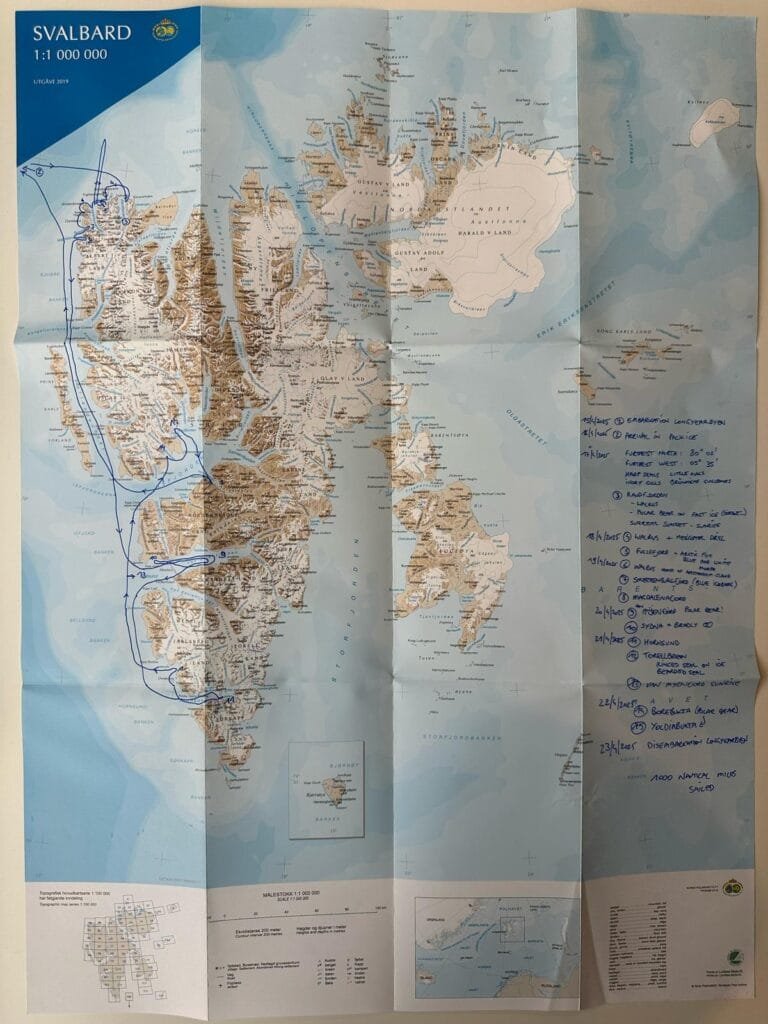
Each day followed a flexible rhythm:
-
Meals were loosely scheduled but could be pushed earlier or later depending on wildlife activity.
-
The expedition team was on the bridge 24/7, scanning for wildlife. When they spotted something, they’d alert everyone, and you had just a few minutes to gear up and get outside.
-
Some nights, the ship would drift silently with the pack ice. Other nights, we would power across open water to a new area while we (kind of) slept.
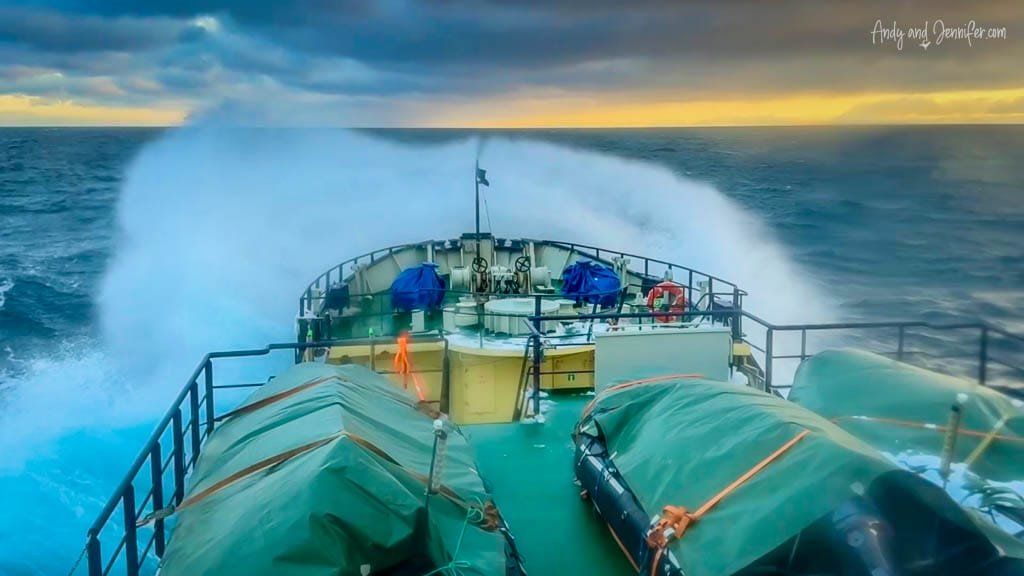
-
Wildlife sightings didn’t always stick to “normal hours”. One night we spent from 11 p.m. to 4 a.m. out on deck, chasing magical light and Arctic animals.
We quickly learned to sleep in our base layers and keep our camera gear prepped and ready at all times — a real “fireman style” operation. When a sighting came in, you needed to be outside within minutes — or risk missing the moment entirely.
Weather in Svalbard April
Mid-April in Svalbard still feels like the depths of winter. Temperatures typically range from -10°C to as low as -30°C (14°F to -22°F). The wind chill makes it feel even colder. Everything is blanketed in snow, and while the sun is back, it never climbs high, instead circling low around the horizon and casting soft, golden light for most of the day. Conditions can shift quickly — from calm and sunny to complete whiteout. Even a few minutes of exposed skin in Svalbard’s April temperatures can lead to frostbite — or at the very least, painful windburn and numbness that makes handling a camera nearly impossible.
The ship was constantly coated in ice — railings, steps, even the bell — and while the crew did an amazing job keeping things safe, it was a never-ending battle; we were always reminded to keep one hand for the ship and maintain three points of contact at all times. Luckily, we had no accidents (human or camera) during our time aboard.
What Clothing to Pack for Visiting Svalbard in April
Packing for Svalbard is a bit of a paradox — you want to pack light, but everything is bulky. Layers are everything. Start with a wool base layer, add a fleece midlayer, and top it off with a windproof, waterproof parka and insulated pants rated to at least -30°C.
It might seem logical to stack two down jackets for extra warmth, but it doesn’t really work that way. Down needs loft (air space) to insulate properly — when you compress it by layering one jacket over another, you actually reduce its ability to trap heat. Instead, layer with a wool or synthetic base layer, a fleece or insulated midlayer, and then your outer down or synthetic parka. That way, each layer does its job without squashing the others.
Your boots should be waterproof with a thick, insulated sole to keep the cold from seeping in. For accessories, don’t skip a warm hat, balaclava, thermal gloves, and thick wool socks. There is nothing worse than being cold in the middle of a terrific sighting. And of course I have a packing spreadsheet — it helps me remember everything (or at least forget less), and if my bag goes missing, I’ve got an instant shopping list.
Use soft-sided luggage if you can; hotel rooms and ship cabins are small, and there’s not much space for hard-shell cases. I used space bags to compress my parka and to keep accessories like gloves, hats, and neck gaiters neatly bundled. Pro tip: pack smaller items inside your boots to save space.
Our hotel in Longyearbyen didn’t have laundry service, and there’s no laundromat in Svalbard. The ship had a washing machine for emergencies, but we didn’t end up using it. We just washed undies in the sink and dried them in the bathroom — they dried quickly thanks to the heated floors. Bring a few clothespins or pegs to make drying easier.
What Camera Gear to Pack for a Svalbard Photography Expedition
Keep your setup simple but effective: bring your main camera body, the longest zoom lens you own, and a wide-angle lens for landscapes and environmental shots. Our cameras can switch to APS-C mode for extra reach, which we prefer over using teleconverters. One or the other (or both) can be really useful for photographing distant wildlife.
If you have a second camera body, bring it — not just as a backup in case one decides to give up in the cold, but also so you can keep your zoom on one and wide angle on the other to avoid switching lenses in freezing conditions. A polarising filter is also handy for cutting glare off ice and snow on bright days. We brought camera bean bags, but only used them once on the bow. The sides of the ship were too low for the bean bags to be useful.
If you’re bringing an action camera like an Insta360 or GoPro, consider packing a telescoping tripod or selfie stick so you can lower it over the bow or sides of the ship for unique angles. We had our Insta360 with us — and completely forgot to use it. Still kicking myself… guess we’ll just have to go back!
Camera Fogging: Should You Worry?
I was pretty worried about my camera and lenses fogging up when moving from the freezing outdoors back into the warm interior of the ship. The usual advice is to bring a bag outside with you, and when you’re done shooting, seal your camera inside it before heading back in. That way, your gear warms up gradually and any condensation forms on the outside of the bag — not on your camera.
In theory, this can be a concern in the Arctic, but condensation is usually more of an issue in hot, humid places — like going from tropical heat into blasting air-conditioning. I followed the bag method religiously on day one, but quickly realised the dry Arctic air made fogging a non-issue. No one else was having problems either, so I stopped worrying — and never had any issues.
Managing Expectations on a Svalbard Photography Expedition
Svalbard is not ideal if you’re after nonstop wildlife action and a huge variety of species. If you are after tight-frame polar bear portraits, Churchill is the place to do. But if you’re chasing dramatic Arctic light, minimalist landscapes, and the chance to photograph wildlife in truly remote, wild settings — Svalbard delivers.
For us, a successful trip isn’t measured by thousands of frames. It’s about coming home with a handful of images we really love. In that sense, this was absolutely a successful expedition. We added a few new species to our portfolio on this trip, but the real reward was the quality of light and the space to be patient.
Enough small talk – let’s see the images!
Next up – The Landscapes of Svalbard
We’re Andy and Jennifer—two former corporate executives who chose long ago to prioritise experiences over stuff while pursuing our passions for travel and photography. From the Arctic to Antarctica, and most places in between, we’ve captured the world through our lenses and love sharing those stories. Our careers gave us the means, but our purpose is inspiring others to explore and helping people create images they’re proud of.

